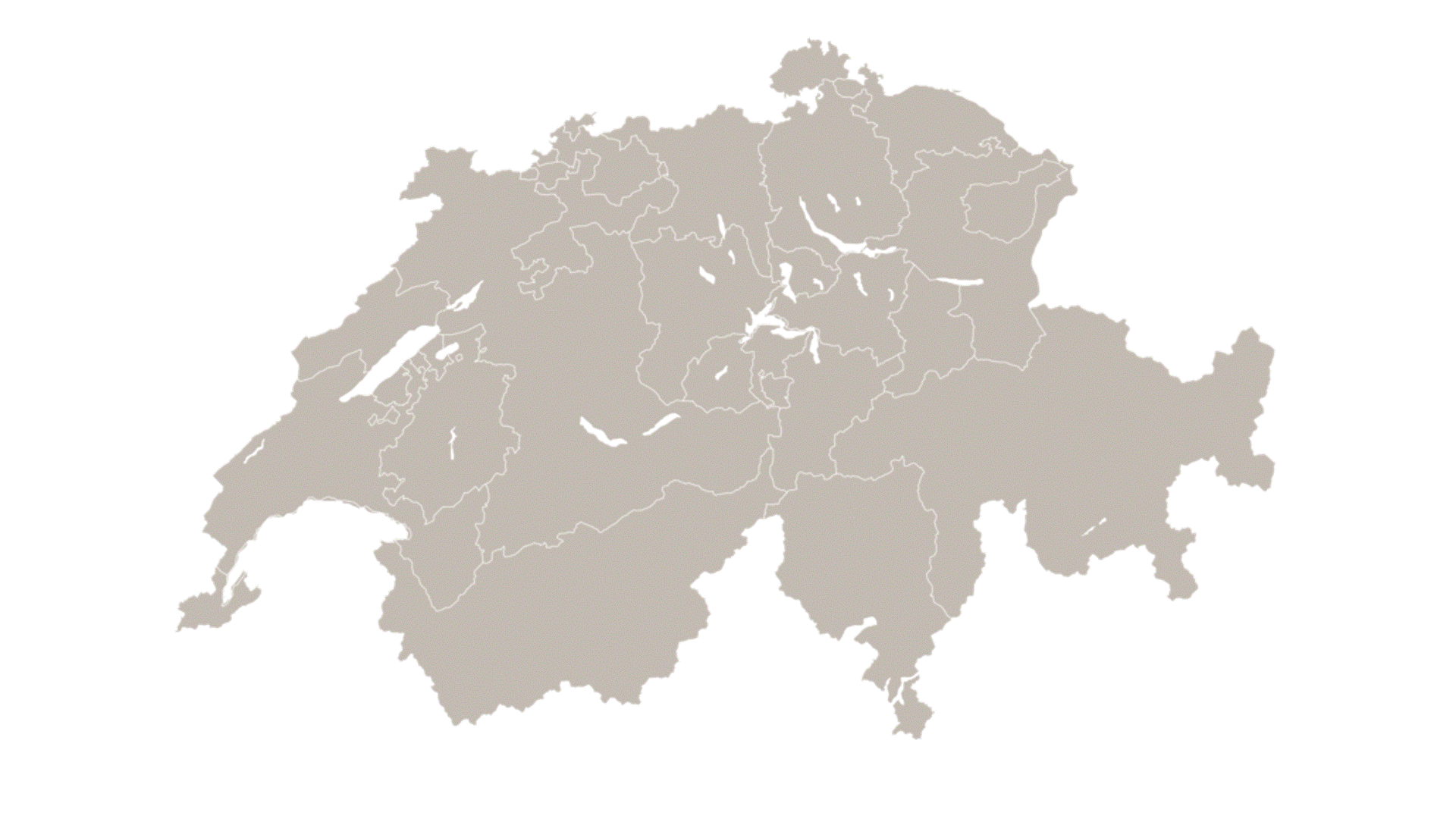The history of trading
From the first joint stock company to today's trading platforms - or vice versa back in time.
A digital exhibition of the Swiss Finance Museum on the history of stock exchange trading
Stock exchange trading today
Trade - what does it even mean?
"Trade" describes the buying and selling of goods or economic assets. At least two parties are involved. Negotiation is central, but the form is subject to the currents of the times - by app, digitally, electronically... right back to the handshake. One thing is certain: trade is becoming faster and faster and now takes place virtually around the clock worldwide.

New forms of stock market trading
Start of electronic trading on the stock exchange
Milestones
Click on the arrows to the left and right of the box to see more milestones.
The switch to electronic trading brings a massive increase in turnover and liquidity. This is because you no longer have to be present on the ring, but can trade electronically from anywhere in the world.
Where are the securities when they no longer physically change hands? The securities are held in central custody; in Switzerland, this service is provided by SIX. In the central vault in Olten, the securities are stored under ideal conservation - as well as security - conditions.
Incidentally, the part of the Finance Museum's collection that is not currently on display in the exhibition is also stored here.
Podcast: "The stock exchange once and today"
Once on the ring, today in the server room; stock exchange trading has changed fundamentally. In this podcast episode, the current head of the stock exchange, Christian Reuss, from SIX Swiss Exchange and Dr. Richard T. Meier, former director of the Zurich Stock Exchange, talk about the transformation. The conversation is moderated by Foundation Board memberof the Swiss Finance Museum and former spokesman for the exchange, Werner Vogt. An episode about differences and things in common - and what a stock exchange does in general.
Listen to the episode
Ring trading - à la criée
The last trading day on the ring in the former Selnau stock exchange building
350 traders work at the Ring Stock Exchange, the majority of them men. The first woman did not start her career as a trader until 1988.
Please also read our blog post "The first female CEO of the stock exchange and the start of electronic trading".
Read the articleA day at the time of ring trade
Trading „à la criée“
In each case, one transaction settles the other. Each negotiation of a new market price takes at least a few seconds.
Electronic trading
In electronic trading, all listed securities are traded simultaneously, initially in seconds and later in milliseconds.
Schedule of a day on the stock exchange: ring trading
Trading time: 9.30 - approx. 12.00 hrs
Schedule of a day on the stock exchange: electronic trading
Trading time: 9.00 - 5.30 pm
from 1988: no lunch break anymore
With the introduction of the benchmark Swiss Market Index (SMI), there is no longer a midday break, because the calculation of the index requires permanent trading. Until 1988, there is also no official closing time. This is then set at 1:15 pm.
Please also read our blog post "SMI - Switzerland's most well-known curve" and get to know why derivatives are involved.
Read the articleSignals
Hand signals, along with a strong voice, are the means of communication at ringside.
When making an offer to buy, the palms face the body - you go for it. When making an offer to sell, it's the other way around.
A stock market television camera is on display at the Finance Museum.
The first stock exchange television
New television technology meets inventiveness:
- In 1930, Ticker AG is founded in Zurich to relay the prices of the Zurich Stock Exchange by telegraph.
- In 1961, the two companies Autophon and Telekurs introduce the first stock exchange television in the Basel and Zurich stock exchanges. This now provides the recipient with real-time transmissions of the handwritten price sheets. Offices next to the Ring, bank branches and subscribers throughout the city thus received real-time information on up to 90 securities and conducted their stock exchange business much more efficiently in the upswing of the post-war years.
- From 1969, telex technology is used to make price information available throughout Switzerland.
Other countries, other forms of trade
The panel on the pillar shows the trading times and segments traded in the respective Corro. Source: El Centro de documentación de Bolsa de Madrid (BME)
While the term "ring trading" is most commonly used in Switzerland, the term "floor trading" is used elsewhere, for example. What both have in common is that the stock exchange transaction is carried out locally, i.e. it is presence trading. In Switzerland, this is appropriately called ring trading because of the ring - i.e. the circular arrangement of the traders who exchange their bids loudly. In floor trading, the buying and selling parties usually seek each other out in the hustle and bustle. In Madrid on the Spanish stock exchange, in addition, the transactions are concluded in so-called "Los corros" " (in English: circles) and then only brought to the stock exchange commissioner in the middle to be written down.
The Swiss stock exchanges emerge
Frances Elizabeth Wynne: View of Geneva from Rousseau Island, 1858. Source: Wikimedia Commons
1850: Geneva
The first Swiss stock exchange to introduce ring trading is Geneva, where the idea of a circular barrier around which traders gather is adopted from the Paris Stock Exchange.
All stock exchange locations in Switzerland

134 years of underdog: The Bern Stock Exchange remained independent from 1884 until 2018 and specialized in Swiss SMEs. It only became a subsidiary of Börse Stuttgart GmbH in 2018.
When was the Zurich Stock Exchange founded? There are several dates that are listed. 1855 is the founding year of the Zurich Stock Exchange Association. In 1877, it is mentioned for the first time in an official price sheet. From 1884 it is under cantonal supervision. In 1977, the 100th anniversary is celebrated, referring to 1877.
Europe's first stock exchanges
1409: Bruges
Trading places for the exchange of goods and services have existed for a long time. The first stock exchange trading exclusively in securities was established in Bruges in 1409.
The birthplace of the term “Börse” (stock exchange). The Beursplein in the centre of Bruges, with the Genoese trading house (second building from the left), the “Ter Beurze” inn (adjoining the trading house – with stork’s nest), the “Ter Ouder Beurze” house (with stepped gable) and the Florentine trading house (with the turrets).
Source: Wikimedia Commons
In medieval times, big merchandise markets and annual fairs were held at strategically important centres of transport or communications. In addition to goods, currencies were also exchanged at these events. Over time, maritime trade also became increasingly important. From the 14th century onwards, major centres of international trade developed in northern Italy – in Venice and Florence, for instance – and in Bruges in Flanders. Bruges became the warehouse of northern Europe’s seaports. Goods, money and information poured into the Hanseatic city from all over the world. Bruges thus played a crucial role in the development of trade and payment transactions. Spices from the East Indies, English fabrics, sugar, and raw materials were stored, traded and sold on the European continent. Stakeholders included the merchants and traders who travelled to these centres or overseas to get the best deals for their business. The Bruges inn run by the “van der Beurs” family was one of these locations. Fittingly, the family coat of arms depicts three purses: going “zu den Beursen” (to the Beursen) had become established as a figure of speech and, legend has it, is the origin of the term “Börse” (stock exchange). A form of initial stock exchange was thus created in 1409. “Beurs” still means stock exchange in Dutch today.
Amsterdam or London after all?
Amsterdam's first stock exchange building (1608). Source: Wikimedia Commons
The original Royal Exchange building in London. Source: Wikimedia Commons
Experts are divided on the question of where the world’s first stock exchange was located. One theory is that the first such formal institution was the Amsterdam Börse, where shares of the Dutch East India Company (Dutch: Vereenigde Oostindische Compagnie, often known as VOC) were traded for the first time in the 17th century. Another holds that the Royal Exchange in London – which burned down in the mid-17th century – was the first, about 30 years earlier than the Amsterdam Börse.
The world's first modern joint stock company
1602: Vereenigde Oostindische Compagnie (VOC)
On 20 March 1602, six Dutch trading companies merged to form a single large long-distance trading company, the "Vereenigde Oostindische Compagnie," or VOC for short. The VOC is granted a state monopoly on trade with the territories to the east and east of India.
The VOC is entitled to conclude contracts...
...and to engage in armed conflict.
Bond of the VOC from 1623 - this is exhibited in the Finance Museum.
Anyone can buy into the VOC. Risk and profit are thus distributed among many different investors. Unlike previous companies, VOC's capital is fixed and invested for the long term, and its shares are actively traded on the Amsterdam Stock Exchange.
What is a share, actually?
As a private entrepreneur, you might be able to afford a single ship that sails to Indonesia and back again in the hope of making a rich profit. However, if this fails, it is tantamount to economic ruin. After all, storms and piracy are real dangers.
However, if one owns only a small share of several ships at VOC, the loss of a single ship is not so significant. At the time, an average of 18 percent in dividends was paid out per share. Part of this also as a real dividend in the form of pepper.
Trading route
Dutch colonial era
The VOC has its headquarters in Amsterdam, Netherlands. The merchant shipping headquarters is located in the colonial area in the city of Batavia, today's Indonesian capital Jakarta on Java. Batavia is founded on the ruins of the city of Jayakarta, which was burned by troops.
The picture in the background at the top of the page is by Jozef Linning with the title "de Beurs" / "La Bourse" .
Concept and realization: Swiss Finance Museum
Images: Wikimedia Commons or own illustrations / images
Releated topics
Please also read our blog post "The dream of a quick profit - the birth of trading"
Read the articleWant to learn more about the 1920s? The Swiss Finance Museum takes you through a digital exhibition of this exciting decade.
Visit the digital exhibition